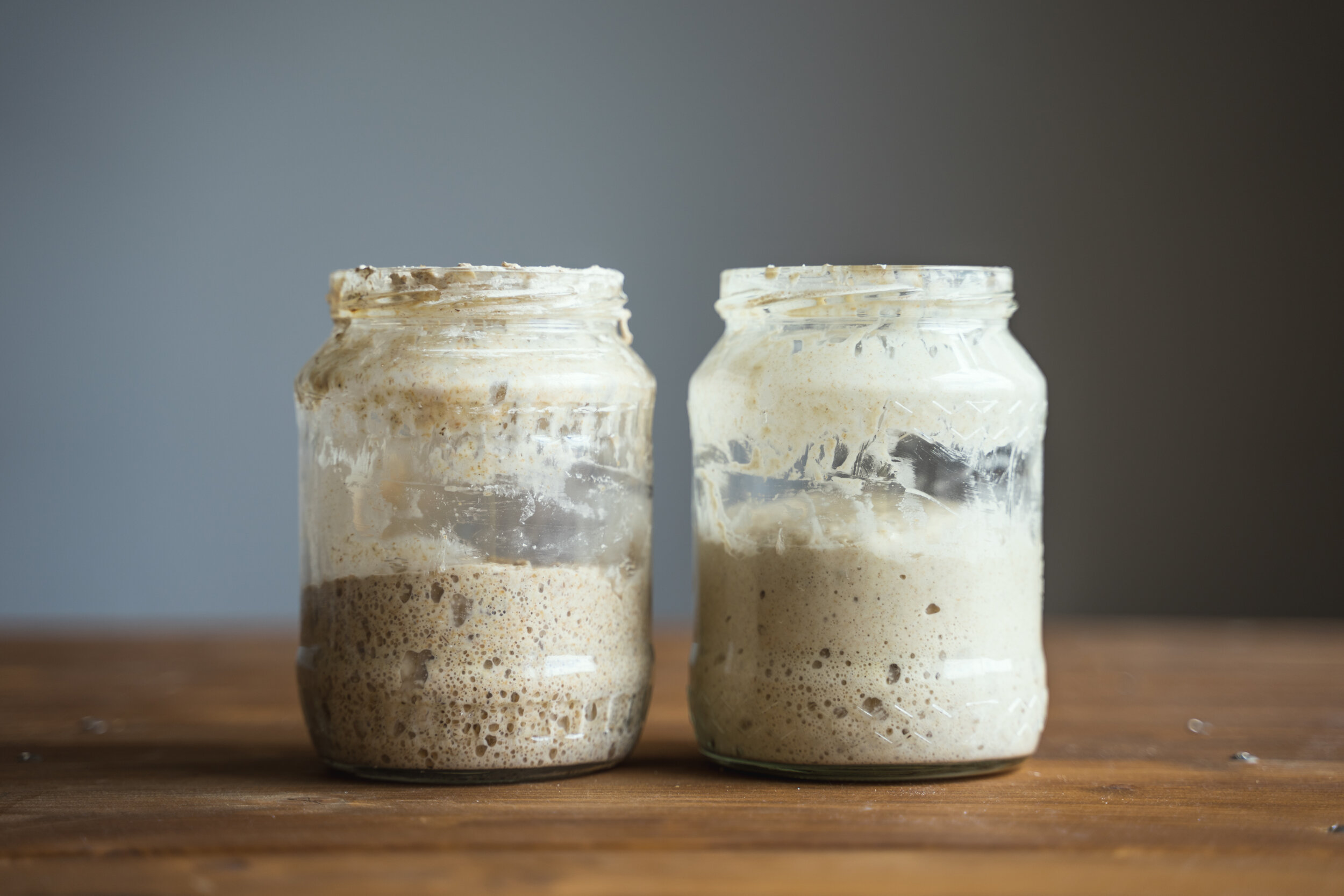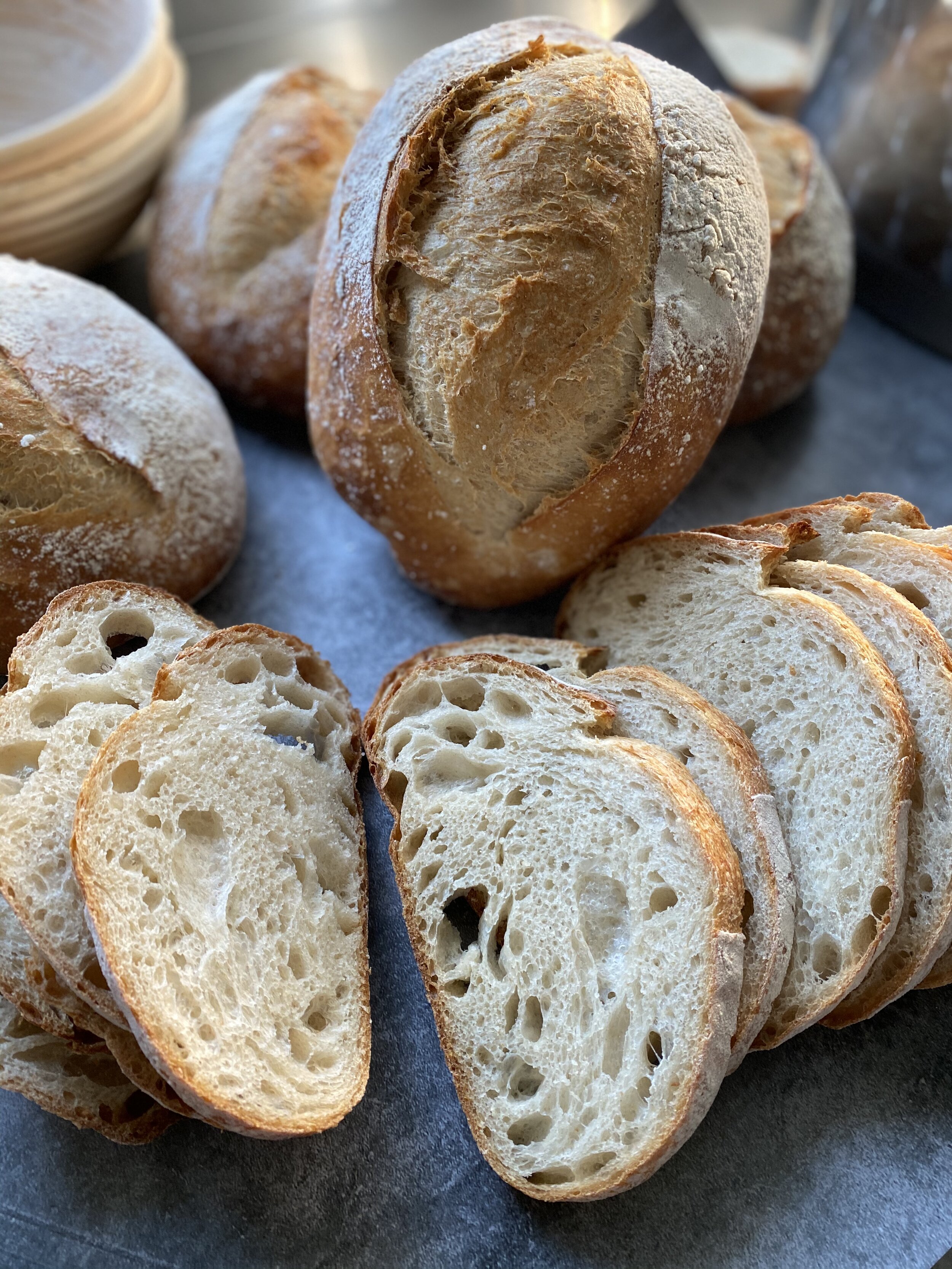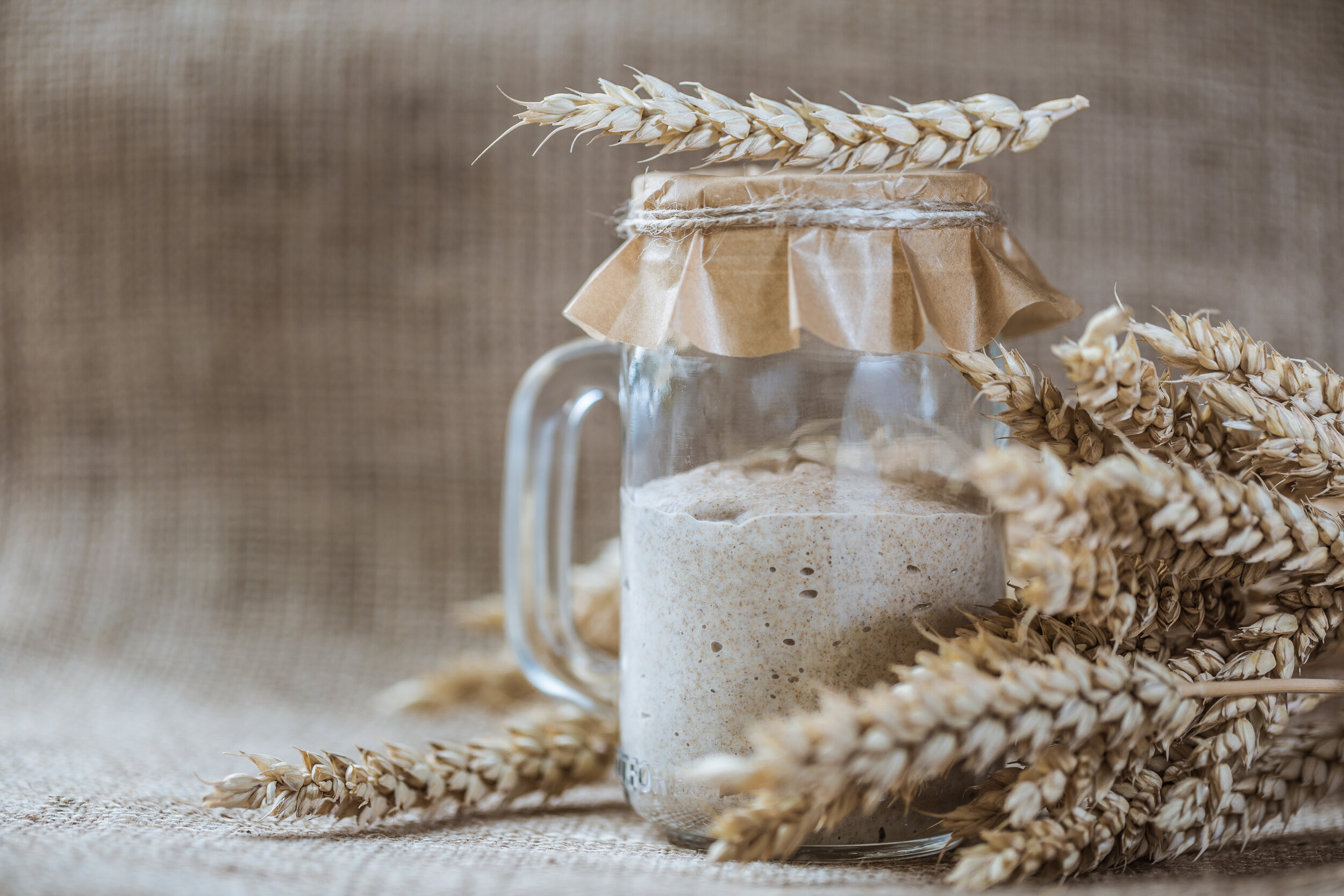With just a little bit of flour, water, and patience, you can be making sourdough in no time.
When properly fed, and taken care of, sourdough starters can last forever. The Mother Culture we make our sourdough with has been flourishing for 5 years!
Making sourdough can seem daunting, but when you get down to it, you’ll see that its simpler than you believe – don’t over think it 🙂
Depending on the temperature of your home, the entire process to create a functional starter will take about 5-8 days from start to finish. With the colder weather upon us, it’s not uncommon for it to take up to 14 days. Once it’s reached a billowy stage, you will just have to keep it refreshed..
Think of it like your new family pet; feed it, love it, take care of it, and in return it will love you back.
The incredible thing about sourdough made in your own home is that it will never be the same as someone else’s. Why’s that? Sourdough culture is made from the wild yeast and microbes that live everywhere in your home – in flour, air, the fruits in your kitchen! Sourdough bread is made by the long fermentation of dough using wild harvested lactobacilli and yeast. The lactic acid, which creates a milky texture, is produced by the lactobacilli which gives your loaf a rich, sour flavour profile, and has many health benefits! Take a look at this article we wrote to learn more about the fermentation process before you put your baking hat on and move full-steam ahead “Demystifying Sourdough”.
Now that you’ve learned about all the reasons you should be making sourdough, lets not waste another minute, ok? Ready. Set. Go.

Heres what you will need:
Wide mouth Mason jar
Organic all-purpose flour
Organic whole wheat flour
Warm water: 20°C – 23°C (70°F- 85°F)
Kitchen scale
Pen & paper for logging
Terminology you need to know:
Starter / Mother Culture – the Master of the Operation. This is the stuff in the mason jar that you cherish, love, and feed.
Leaven – this is what goes in the dough as an ingredient. It is starter mixed with flour and water.
As a rule of thumb, weigh your mason jar without the lid and record the weight.
Now, every time we want to refresh the starter, we can just subtract the weight of the jar. We highly recommend using a kitchen scale for accuracy.
Day 1:
1/2 cup (60g) organic all-purpose flour
1/2 cup (60g) organic whole wheat flour
1 cup (120ml) warm water
Mix well in mason jar. Cover loosely, let sit at room temperature for about 24 hours.
Day 2:
Place your starter on the scale, tare the jar.
Discard 120g of starter (about 1 cup)
Feed the starter with:
1/4 cup (30g) organic all-purpose flour
1/4 cup (30g) organic whole wheat flour
1/2 cup (60ml) warm water
Mix well, cover loosely, sit at room temperature for about 24 hours again.
Day 3:
At this point you may or may not start to notice some bubbling, this is great! Means all your variables are in check.
Discard 120g of starter (about 1 cup)
Feed the starter with:
1/4 cup (30g) organic all-purpose flour
1/4 cup (30g) organic whole wheat flour
1/2 cup (60ml) warm water
Mix well, cover loosely, sit at room temperature for about 24 hours again.
Day 4:
Your starter will have visibly changed. It is bubblier, smells pleasantly acidic, and easier to mix.
At this point, you have started the base of the starter with whole wheat flour which will have given it strength. You can choose to do 100% all purpose flour, or continue as below:
Discard 120g of starter (about 1 cup)
Feed the starter with:
1/4 cup (30g) organic all purpose flour
1/4 cup (30g) organic whole wheat flour
1/2 cup (60ml) warm water
Mix well, cover loosely, sit at room temperature for about 24 hours again.
Day 5:
Guess what? You’re almost there!
Discard 120g of starter (about 1 cup)
Feed the starter with:
1/4 cup (30g) organic all purpose flour
1/4 cup (30g) organic whole wheat flour
1/2 cup (60ml) warm water
Mix well, cover loosely, sit at room temperature for about 24 hours again.
Day 6:
At this point, you might even be ready to use your starter. Want to know how to test it?
Take a little bit of your starter that has been refreshed and drop it into some warm water, if it floats, do your happy dance. Its ready!
If it sinks, keep refreshing until its light and bubbly.
Refreshing your starter should be a daily occurrence, the more active it is, the more you can feed it. Say, once in the morning when your coffee is brewing, and once in the evening before bed.
If you need to take a break from feeding, keep the jar in the fridge to keep it dormant.
Once you become comfortable feeding your starter, you can adjust the flour:water ratio, or use some of your starter to create different starters; rye, quinoa, whole wheat, etc.
When your sourdough is bubbly and billowy, you are now ready to use the starter to make your leaven.
Here is an exemplary ratio of how to make your leaven:
100g flour + 100g warm water + 10g starter
Mix this together and let sit at room temperature for 8-12 hours depending on the atmosphere. If you are uncertain as to when it is ready, when it doubt, float it out! If it floats, you are finally ready to start baking!

TROUBLE SHOOTING:
I forgot to feed my starter for a few days; did I kill it?
Just like you, your sourdough starter is very resilient.
If you’re going on vacation, you dont have to worry while you’re away.
If you forget to feed it for a few days, or even a week or two, don’t stress. After a refreshment, and several hours, it will bounce back in almost any case.
My sourdough isn’t rising and falling as it should. What should I do?
Wild yeast needs a bit of warmth to thrive. Optimal temperature for a sourdough kitchen is between 20°C – 23°C (70°F- 85°C F), basically, if you’re comfortable in a t-shirt and jeans, the temperature is perfect.
My starter smells funny, and it’s rising too fast. What’s going on?
It’s important to remember that sourdough culture harvests the wild bacteria in the air, that being said, if your culture is close to things that are highly microbial, it can start to change the composition of your starter. Try to keep it away from your kombucha, or fruits, and certainly your compost bin.
There is mold in my jar, should I give up?
Mold doesn’t often occur with sourdough because you are dealing with similar bacterias, though it does happen. Stay calm, just transfer your starter to clean new jar, trying your best not to bring the mold with you.
There is a black liquid on top of my starter, what did I do wrong?
You didn’t do anything wrong. This is totally natural if you haven’t fed your starter for a few days. This black liquid, called the hooch, is just your starter’s way of saying “feed me!” Pour out the hooch and feed the starter as usual, et voila, back to normal!
There are pink and orange spots growing on my starter, what now?
At this point, and only this point, do we discard the starter entirely.
Pink and orange spots and speckles are signs are bad bacteria, ones that make you feel sick.
This only occurs if the starter has been left for months on end, or if there has been some sort of cross-contamination, such as putting in a dirty spoon or starting off with a dirty jar.
Don’t try to salvage what you have if you see pink and orange spots, just start fresh.
Happy baking! xx



